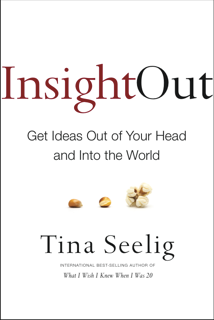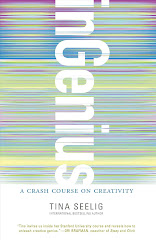Provocative. Just one word... Provocative.
Until recently, prospective students at All Soul’s College, at Oxford University, took a “one-word exam.” The Essay, as it was called, was both anticipated and feared by applicants. They each flipped over a piece of paper at the same time to reveal a single word. The word might have been “innocence” or “miracles” or “water” or “provocative.” Their challenge was to craft an essay in three hours inspired by that single word.
There were no right answers to this exam. However, each applicant’s response provided insights into the student’s wealth of knowledge and ability to generate creative connections. The New York Times quotes one Oxford professor as saying, “The unveiling of the word was once an event of such excitement that even nonapplicants reportedly gathered outside the college each year, waiting for news to waft out.” This challenge reinforces the fact that everything—every single word—provides an opportunity to leverage what you know to stretch your imagination.
For so many of us, this type of creativity hasn’t been fostered. We don’t look at everything in our environment as an opportunity for ingenuity. In fact, creativity should be an imperative. Creativity allows you to thrive in an ever changing world and unlocks a universe of possibilities. With enhanced creativity, instead of problems you see potential, instead of obstacles you see opportunities, and instead of challenges you see a chance to create breakthrough solutions. Look around and it becomes clear that the innovators among us are the ones succeeding in every arena, from science and technology to education and the arts. Nevertheless, creative problem solving is rarely taught in school, or even considered a skill you can learn.
Sadly, there is also a common and often-repeated saying, “Ideas are cheap.” This statement discounts the value of creativity and is utterly wrong. Ideas aren’t cheap at all—they’re free. And they’re amazingly valuable. Ideas lead to innovations that fuel the economies of the world, and they prevent our lives from becoming repetitive and stagnant. They are the cranes that pull us out of well-worn ruts and put us on a path toward progress. Without creativity we are not just condemned to a life of repetition, but to a life that slips backward. In fact, the biggest failures of our lives are not those of execution, but failures of imagination. As the renowned American inventor Alan Kay famously said, “The best way to predict the future is to invent it.” We are all inventors of our own future. And creativity is at the heart of invention.
As demonstrated so beautifully by the “one-word exam,” every utterance, every object, every decision, and every action is an opportunity for creativity. This challenge, one of many tests given over several days at All Soul’s College, has been called the hardest exam in the world. It required both a breadth of knowledge and a healthy dose of imagination. Matthew Edward Harris, who took the exam in 2007, was assigned the word “harmony.” He wrote in the Daily Telegraph that he felt “like a chef rummaging through the recesses of his refrigerator for unlikely soup ingredients.” This homey simile is a wonderful reminder that these are skills that we have an opportunity to call upon every day as we face challenges as simple as making soup and as monumental as solving the massive problems that face the world.
............
After a dozen years teaching courses on creativity and innovation at Stanford, I can confidently assert that creativity can be enhanced. My new book inGenius is filled with details about specific tools and techniques that work well, along with stories that bring them to life. We will look at ways to increase your ability to see opportunities around you, to connect and combine ideas, to challenge assumptions, and to reframe problems. We will explore ways you can modify your physical and social environment to enhance your creativity and the creativity of those with whom you live and work. In addition, we will look at the ways your motivation and mind-set influence your creative output, including your willingness to experiment, your ability to push through barriers to find creative solutions to daunting challenges, and your skill at turning off premature judgment of new ideas.
It is important to understand that these factors fit together and profoundly influence one another. Therefore, none can be viewed in isolation. I’ve created a new model—the Innovation Engine—that illustrates how all these factors work together to enhance creativity. I chose the word “engine” because it, like the word “ingenious,” is derived from the Latin word for innate talent and is a reminder that these traits come naturally to all of us. My goal is to provide a model, a shared vocabulary, and a set of tools that you can use right away to evaluate and increase your own creativity and that of your team, organization, and community.
In inGenius, you will learn how to jump-start your Innovation Engine, and you will fully appreciate that every word, every object, every idea, and every moment provides an opportunity for creativity. It costs nothing to generate amazing ideas, and the results are priceless.
Adapted from INGENIUS by Tina Seelig. Copyright © 2012 by Tina L. Seelig. Used with permission of HarperOne, an imprint of HarperCollinsPublishers.



